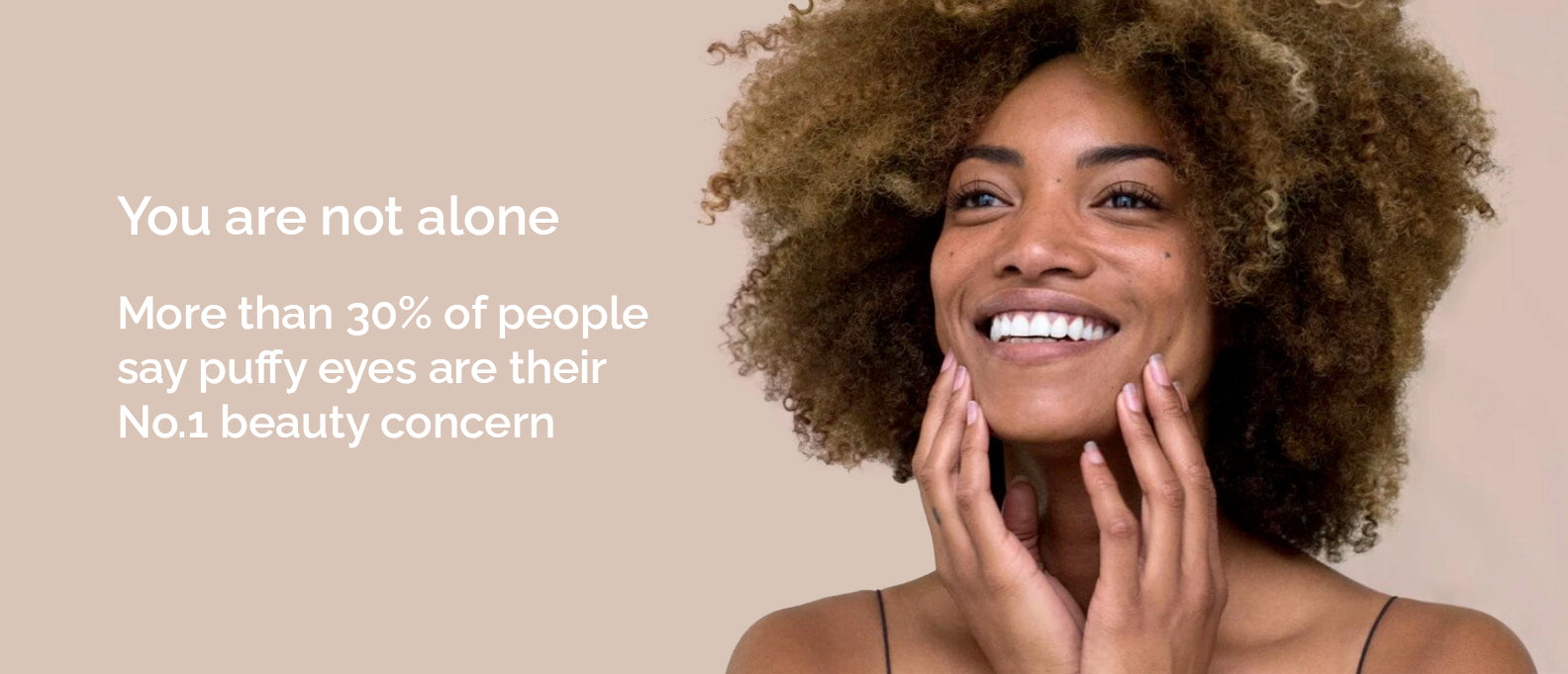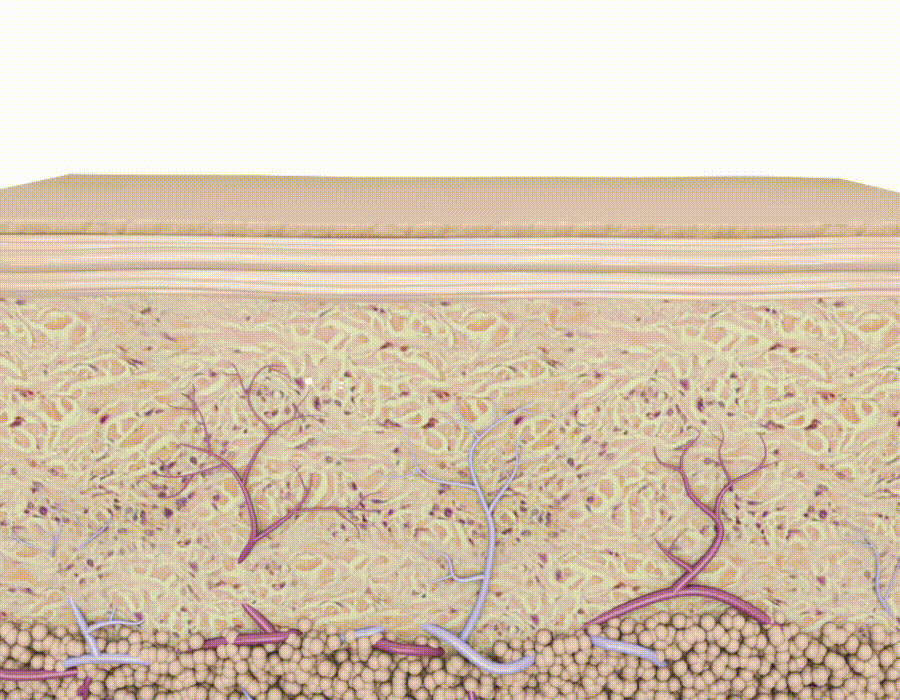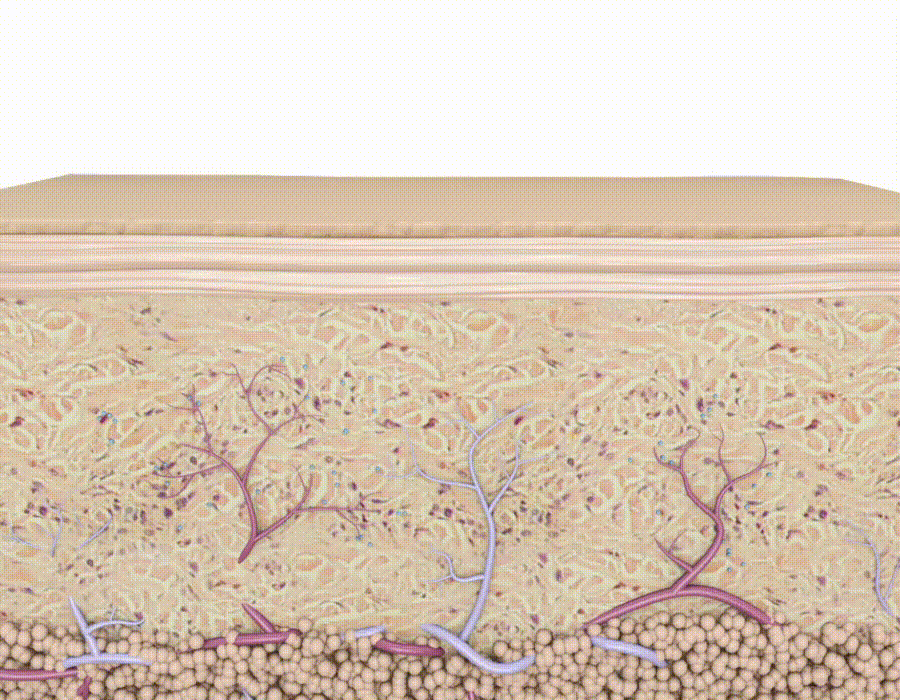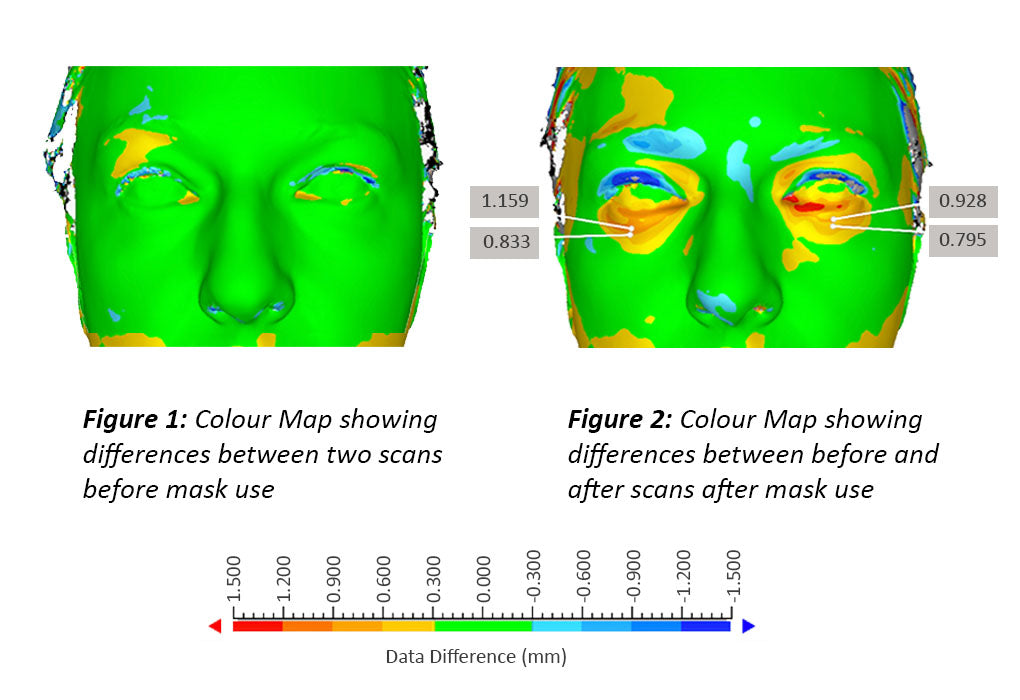Existing treatments target under-eye swelling after it occurs. The Compress3D Eye Mask is unique in stopping swelling before it ever starts.

What Causes Puffy Eyes?
Morning eye swelling or puffy eyes, also called periorbital edema, is one of the most common aesthetic concerns worldwide.
Lying down while sleeping, combined with other lifestyle factors like alcohol or salt intake, reduces the hydrostatic pressure inside your body. In areas with thinner skin and weaker muscle tone like the under-eye area, this fluid builds up in the subcutaneous tissue and leads to swelling.
While gravity and the lymphatic system drain this fluid out over the course of the day, repeated nightly swelling stretches the skin over time leading symptoms to worsen with age.

How Does The Compress3D Eye Mask Work?
The mask uses focused, gentle, and personalized compression to prevent the fluid build-up that causes eye bags. The skin under the eye is 3-5 times thinner than in other areas of the body. When lying flat at night, the drop in hydrostatic pressure causes fluid to leak into the subcutaneous tissue in this area.
Our mask addresses this natural physiological process by applying a gentle counter-pressure to prevent the overnight fluid leakage. The repetitive nightly expansion of under eye skin is one of the major causes of sagging skin and eye-bag growth common with aging, and thus nightly use of the mask can help prevent more chronic eye bag issues as well.

Making Your Compress3D Mask
After importing your scan from the Ellio Labs iOS App, we use our proprietary software plug-in to help our 3D-modelling team build your mask frame and liner quickly and accurately matched to your unique contours. At this stage it's off to the printer, then shipped to you!
For those who really want to understand the details, watch this technical presentation.
Wake Up To Results You Can See
The test subject was scanned before and after 1 week of consistent mask use at a National University of Singapore lab. Using overlay analysis tools, the under eye area showed a 0.8mm to 1.2mm reduction in volume of the under-eye area or on average a 67% improvement in eye puffiness.

